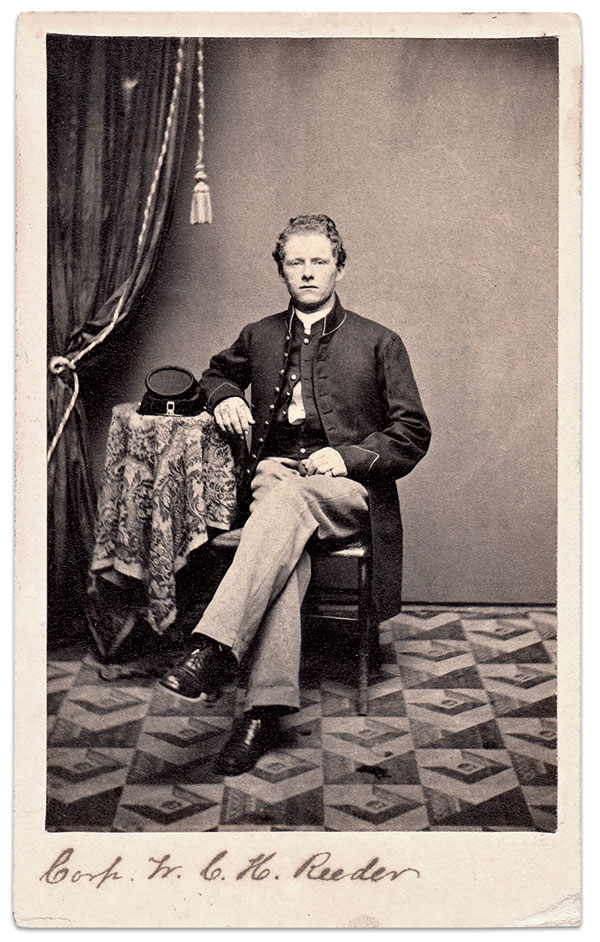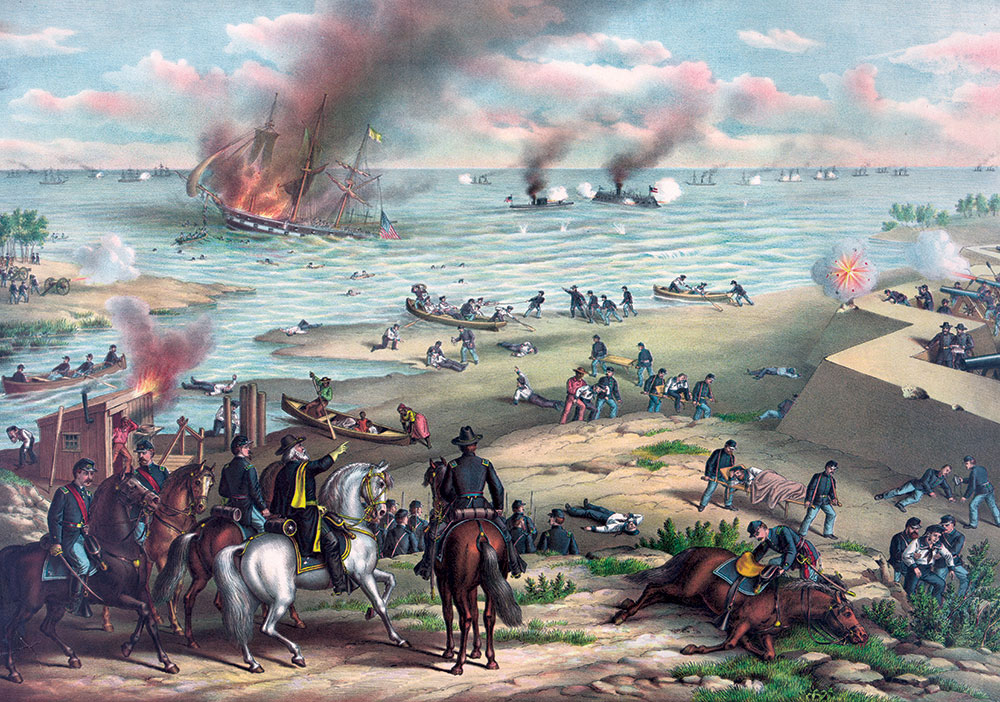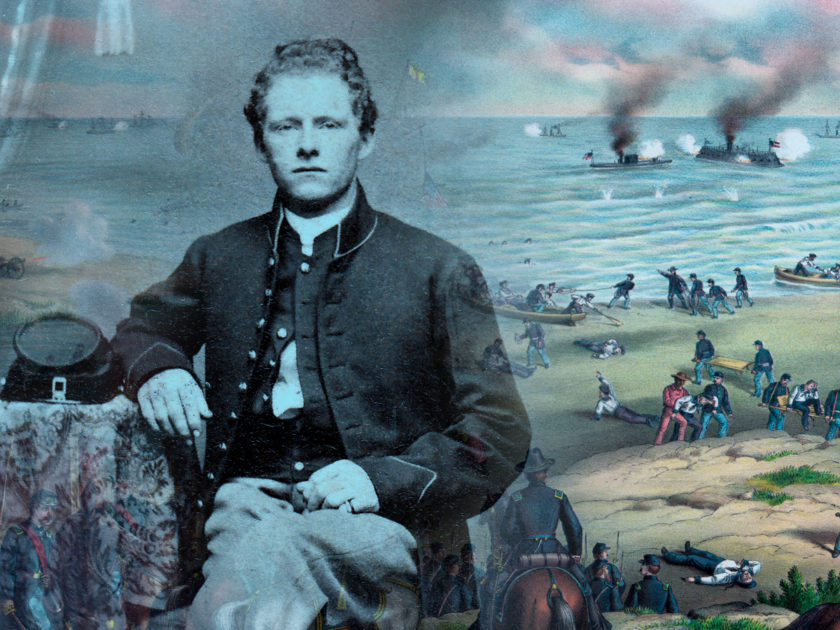By Scott Valentine

Corporal William Charles Henry Reeder sent dozens of letters to his parents about his Civil War experience. A keen observer, Reeder and his comrades in the 20th Indiana Infantry happened to be at Newport News, Va., during two historic naval engagements. On March 8, 1862, the Indianans rescued wounded Union sailors from the wooden warships Cumberland and Congress after the successful attack by the rebel ironclad Virginia.
The next day, Reeder bore witness to the duel between the Virginia and the Union’s first ironclad, the Monitor. Here’s what Reeder wrote of the seminal naval encounter:
“Sunday morning came and all was still. As soon as the fog cleared away, we could see the two boats that came from Yorktown and the water tiger, as we call the Merrimac [Virginia], steaming up at Sewell’s Point, making down for us for another mix, and she got it, too, for the Ericsson battery [Monitor] was there.
“I will tell you what she looks like. It looks like a long board with a hogshead setting on it. She is a large boat covered with iron, sunk so that all you can see is the little tower on top that has the guns in and they are worked by steam. They revolve round and, when the one comes up that is loaded, they get the range and let her go. As soon as the Merrimac came in range, they commenced on her from the battery and from the Minnesota. They fired thick and fast, almost every shot counted. They did good work for a gunboat of that kind.
“The Ericsson battery put me in mind of a little feist after a large dog, nipping him every time he turned. It kept turning around and peppered in on all sides.

“We have to say that we licked them. The report is that the Merrimac was considerably damaged from our guns. For my part, I do not see how it could be otherwise. Continual pounding will wear out anything. I tell you she is pretty well pecked up, for the Minnesota gave her broadside after broadside and the battery was playing on her all the time. It is my opinion that she went home crippled, but how long she will stay in I cannot tell.
“I wish we could have had them on land where we could have had a fair chance at them.
Reeder had his fair chance three months later at the Battle of Oak Grove. In its first major fight, the 20th suffered 125 casualties, including Reeder, who numbered among the wounded. He recovered and served out his three-year enlistment. After mustering out, he returned to his home in Peru, Ind., and a job as a cabinetmaker. He later worked on the railroads. He lived a long life, dying in 1932 at age 92. He outlived two wives. Four children survived him.
Scott Valentine is a MI Contributing Editor.
SPREAD THE WORD: We encourage you to share this story on social media and elsewhere to educate and raise awareness. If you wish to use any image on this page for another purpose, please request permission.
LEARN MORE about Military Images, America’s only magazine dedicated to showcasing, interpreting and preserving Civil War portrait photography.
VISIT OUR STORE to subscribe, renew a subscription, and more.

